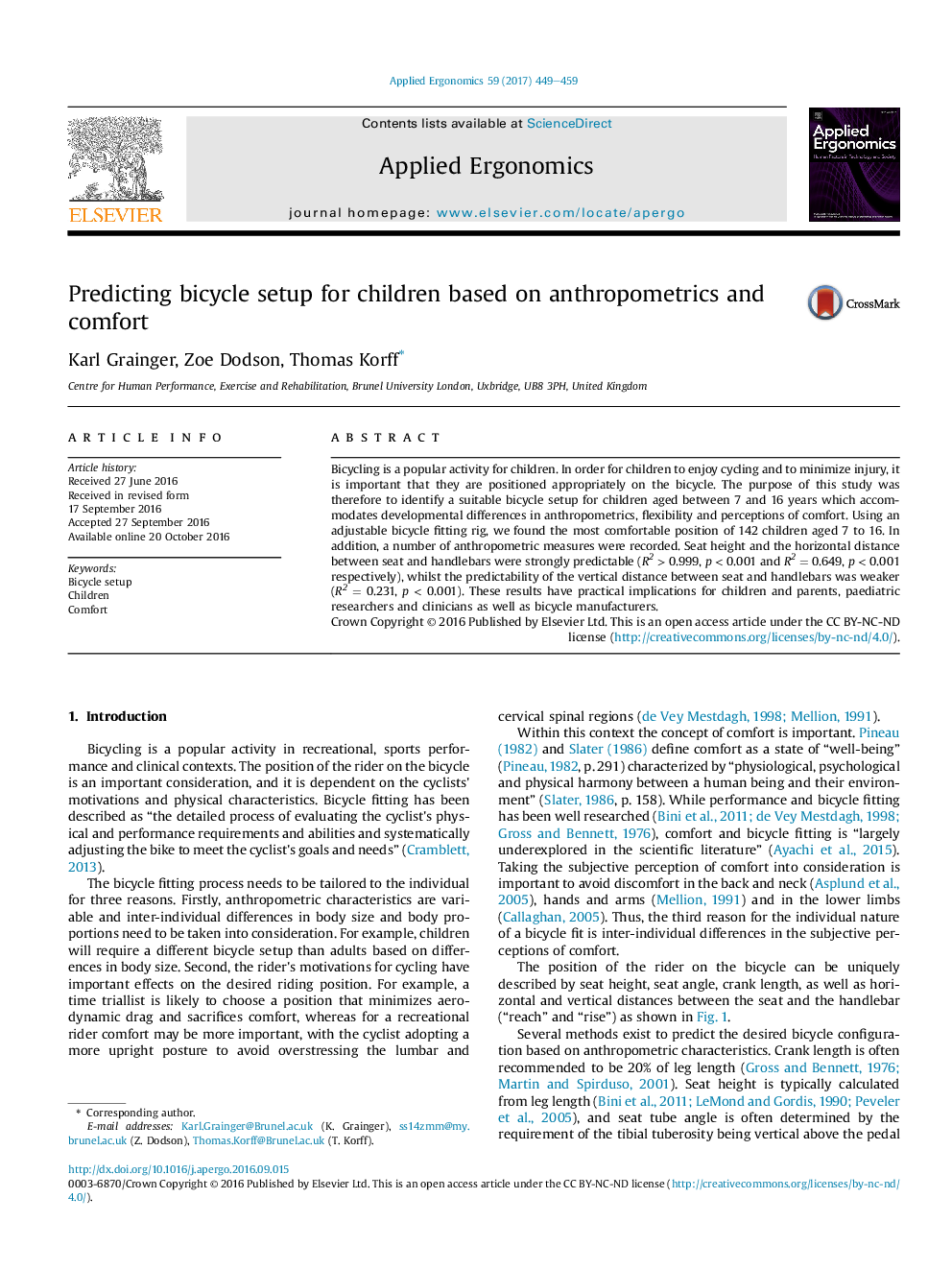| Article ID | Journal | Published Year | Pages | File Type |
|---|---|---|---|---|
| 4972195 | Applied Ergonomics | 2017 | 11 Pages |
â¢An examination of bicycle setup for children.â¢Focusing on comfort, a measurement and prediction of seat height, reach and rise.â¢Seat height is strongly predictable from inside leg length.â¢Reach is strongly predictable from torso and arm length.â¢Rise is weakly predictable from torso and arm length.
Bicycling is a popular activity for children. In order for children to enjoy cycling and to minimize injury, it is important that they are positioned appropriately on the bicycle. The purpose of this study was therefore to identify a suitable bicycle setup for children aged between 7 and 16 years which accommodates developmental differences in anthropometrics, flexibility and perceptions of comfort. Using an adjustable bicycle fitting rig, we found the most comfortable position of 142 children aged 7 to 16. In addition, a number of anthropometric measures were recorded. Seat height and the horizontal distance between seat and handlebars were strongly predictable (R2 > 0.999, p < 0.001 and R2 = 0.649, p < 0.001 respectively), whilst the predictability of the vertical distance between seat and handlebars was weaker (R2 = 0.231, p < 0.001). These results have practical implications for children and parents, paediatric researchers and clinicians as well as bicycle manufacturers.
